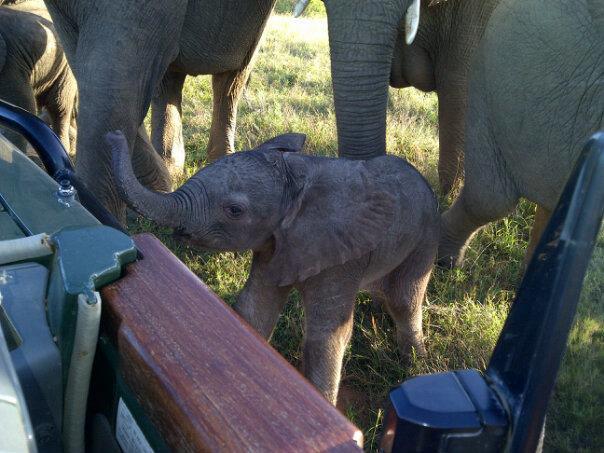Contraception of African elephants
Contraception in free-ranging populations of African elephants, including at Kariega Game Reserve
The Kariega Conservation Volunteers assist the wildlife management team on the reserve with numerous conservation projects, including elephant research. We are sharing this article to further assist the volunteers to gain insights into wildlife management. Please contact our Conservation Volunteer Co-ordinator, Helena Warren via email volunteer@kariega.co.za for further information on the programme.
Porcine zona pellucida immuno-contraception of African elephants (Loxodonta Africana): Beyond the experimental stage
In southern Africa there is a need for elephant (Loxodonta africana) population control, especially in small- to medium-sized, fenced reserves. The objectives of this study were to investigate the effects of porcine zona pellucida-immunocontraception on the reproductive rate as well as the safety during pregnancy of elephant cows in 7 private game reserves in South Africa. A total of 108 individually-identified cows were treated and monitored for 6 years. Primary vaccinations consisted of 400 or 600 μg porcine zona proteins with 0.5 ml Freund’s modified complete adjuvant and boosters of 400 or 200 μg zona proteins with 0.5 ml Freund’s incomplete adjuvant. Vaccine was delivered remotely: year 1, primary plus 2 boosters 3—6 weeks apart; year 2 onwards, annual boosters. Birth of calves was monitored continually and the result expressed as a percentage of cows treated on an annual basis. During years 1 and 2, 35 (32.4%) and 22 (20.4%) calves were born, respectively. No more calves were born from year 3 onwards. One cow conceived around the time of primary vaccination and a second between the primary vaccination and first booster. Two calves died soon after birth from unrelated causes. The remainder survived and were normal healthy calves. One hundred percent of cows passed the 4-year, 67.6% the 5-year, and 47.2% the 6-year inter-calving interval. The results show that it is possible to achieve a contraceptive efficacy of 100% in small- to medium-sized free-ranging populations of African elephants.
Authors: A. Delsink, J.F. Kirkpatrick, J.J. van Altena, M. Ahlers, T. Dickerson, D. Powrie and A. Burger










